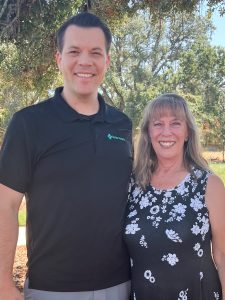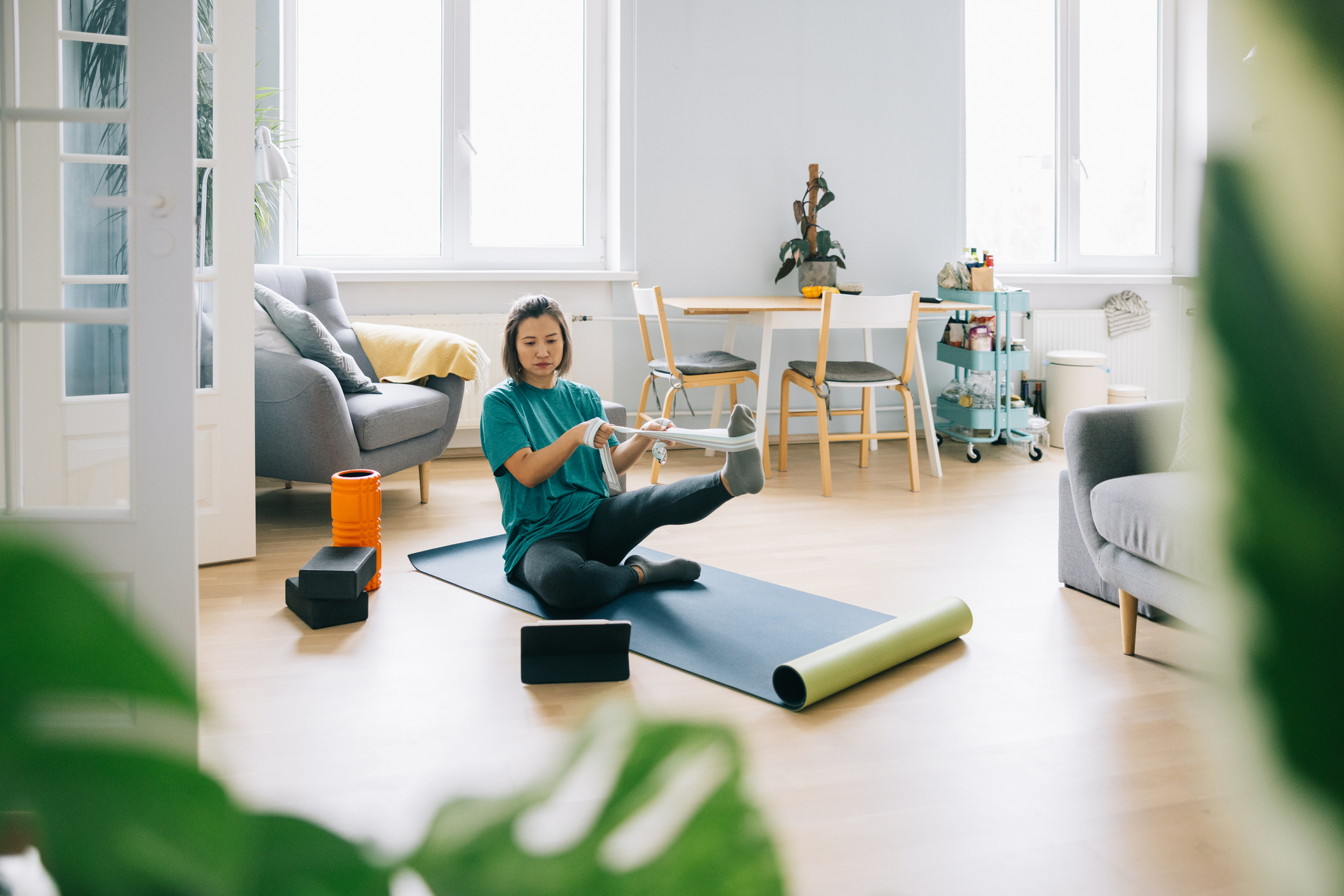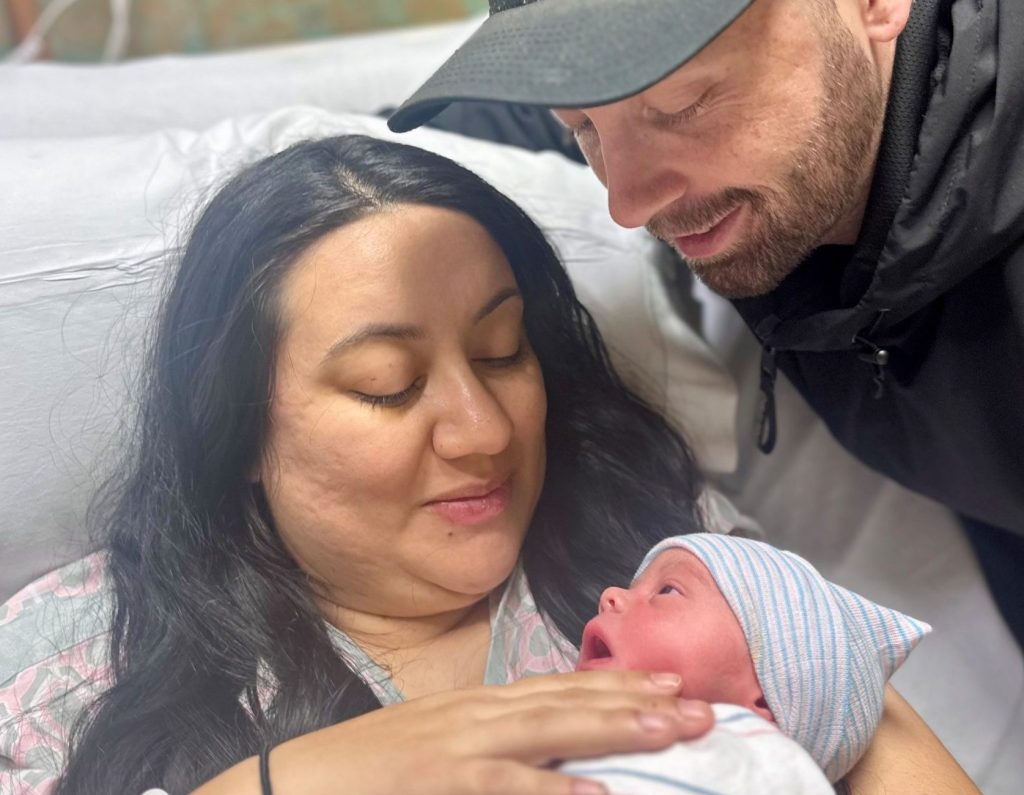By Angela Borchert, Vitals contributor
Tammy Schneider couldn’t get on an airplane or enjoy her beloved hikes due to excruciating back pain. Even simple activities like lying in bed, lounging on the couch or driving became painful. Although she needed physical therapy, the earliest appointment available was three months away, and she couldn’t afford to wait.
Not long ago, patients were required to attend physical therapy appointments in person. However, that’s gradually become a thing of the past. With a nationwide shortage of physical therapists and patients facing long wait times for appointments, one healthcare organization is exploring innovative options to bring physical therapy services directly to patients – right in their homes.
Sutter Health saw a unique opportunity to expand its physical therapy services in Roseville, Calif., by introducing a hybrid model last year. This model allows therapists to offer virtual care, and, when necessary, in-home visits.
“When I was offered the option to do physical therapy virtually, I had some concerns,” said Schneider, 66, a Roseville resident. “How would the therapist demonstrate how to do my exercises? What if I needed a massage like I’ve had before? They assured me that if the therapist felt I needed in-person care, they would come to my house. That was the icing on top for me. I told them, ‘I’m in!’”
She was able to schedule a virtual evaluation within a couple of weeks of her initial call.

Matthew Kerr and Tammy Schneider
There are ongoing efforts across Sutter to expand access to physical therapy care, including virtual, in-home and in-office visits. The virtual/in-home model is a unique and promising offering, and Sutter clinicians hope to expand it in the coming years.
“There are not a lot of other healthcare organizations practicing this way. We see a good number of companies who do one or the other [virtual or in-home visits], but the virtual/in-home hybrid model that can offer the best of both worlds is relatively new,” said Matthew Kerr, a Sutter physical therapist.
According to an article published in the National Library of Medicine, the American Physical Therapy Association recommends “telerehabilitation or hybrid care, as they are at least equivalent to in-person physical therapy with respect to patient acceptability and satisfaction and are superior to in-person physical therapy with respect to adherence and attendance for certain health conditions.”
Kerr is one of the clinicians practicing the hybrid model for Sutter in the greater Sacramento area. About 80% of his visits are virtual, with the remaining 20% conducted at patient’s homes. The program has been so successful that there are plans to expand and offer virtual/in-home PT in Elk Grove, Calif. in 2025.
How Does Virtual PT Work?
Physical therapists don’t need to be in-person to evaluate, diagnose and treat most conditions. They can gather information from a medical record, imaging reports, discussions with the patient, and by seeing movement and function on video.
If a patient needs to be seen in-person, the therapist can come to the home for treatment. For example: certain post-operative protocols, patients with a high fall risk, or those who need specialized equipment or hands-on care.
An initial virtual evaluation takes about 40 minutes. From there, the physical therapist designs a personalized exercise program that patients can easily access through their online patient portal, My Health Online, and complete from the comfort of their home. If equipment is needed, the therapist provides a link to an online store or may bring resistance bands or other equipment with them when they visit your home. Follow-up appointments also last around 40 minutes.

Tammy Schneider enjoyed hikes in Forks, Wash. in July 2024.
The convenience of the virtual/in-home hybrid model benefits both patients and clinicians. Kerr has a case load of about 75 patients at a time with about 50 visits per week – both virtual and in-person. While his caseload is about the same as when he was just practicing in the clinic, he can see patients more efficiently with the virtual model.
“We see far fewer cancellations and no-shows with this model,” said Kerr. “If a patient is sick, they can usually still log on to their phone or computer and discuss their care.”
Schneider lives relatively close to her nearest physical therapy office, but even so, she faced a 40-minute roundtrip drive to the appointment, plus time spent searching for parking and the potential risk of exposure to illness in the clinic.
After three months of weekly appointments with her therapist, Schneider is feeling better – traveling, hiking and returning to the active lifestyle she loves.
“This option for physical therapy has been great for me,” she said. “I am a big fan!”





